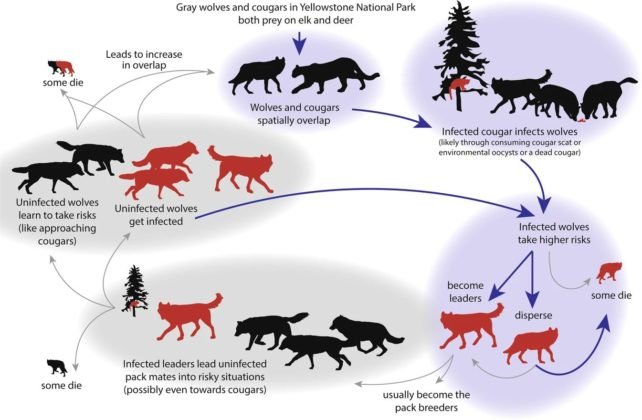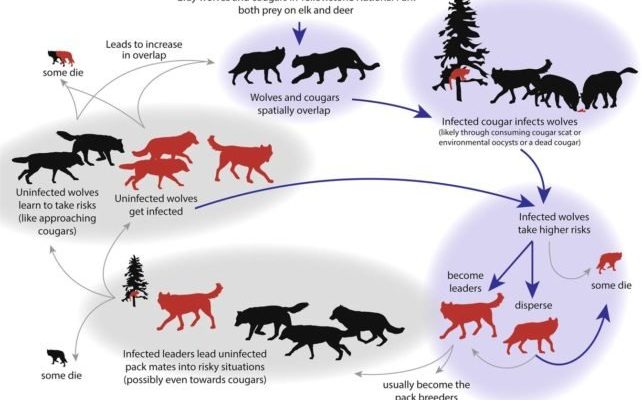
Wolf worms are larvae of certain flies that burrow into the skin of their hosts, often causing noticeable behavior changes. These changes can give us clues about the level of discomfort or stress the animal is experiencing. When animals are under duress, it can be a challenge to spot the signs. Understanding these behaviors is crucial, not only for animal welfare but also for our broader understanding of ecosystems. So, let’s dive into what happens when our furry friends face this unsettling issue.
What Are Wolf Worms?
Wolf worms are actually the larvae of flies that lay their eggs in the wounds of animals, particularly in rodents, birds, and sometimes even pets. When the eggs hatch, the larvae burrow into the skin, feeding on the host’s tissue. It sounds grim, right? This infestation leads to *cutaneous myiasis*, a term that describes the condition of having an infestation of fly larvae in the skin.
These larvae can cause significant discomfort, leading to different behavioral changes in their hosts. The extent of the changes varies depending on the species affected and the severity of the infestation. Animals might exhibit signs of stress or pain, leading to changes in their normal activities and social interactions. One example is a dog that usually loves to fetch but suddenly becomes withdrawn and irritable. You might wonder, “What’s wrong with my pet?” The answer could lie beneath the surface.
Recognizing Behavioral Changes in Affected Animals
You might be asking yourself, *How do I know if an animal is infected with wolf worms?* Well, signs can range from subtle changes to more drastic alterations in behavior. For instance, animals might become more agitated, vocalize more than usual, or even avoid their favorite activities.
Common behavioral signs to watch for include:
- Increased Aggression: An animal that is typically docile may snap or growl when approached.
- Isolation: Animals may withdraw from social interactions, hiding away more than usual.
- Restlessness: An infested animal often has difficulty settling down, pacing or scratching more frequently.
These changes are the animal’s way of signaling that something is wrong. It’s their version of saying, “Hey, I need help!” It’s essential to pay attention to these signs for the well-being of the animal and to prevent further complications.
The Role of Pain and Discomfort
Pain is one of the most significant factors that lead to behavioral changes during a wolf worm infestation. Just like how you might feel cranky and out of sorts with a bad headache, an infested animal experiences discomfort and stress. The larvae burrow into the skin, causing inflammation and irritation, which can intensify the animal’s discomfort.
Consider how humans often respond to pain. We might become short-tempered or less social. Animals are similar—they react to pain in ways we can observe but may not fully understand. These reactions can include increased vocalizations, a change in appetite, or even decreased interest in play. It’s a clear signal that something needs attention.
Impact on Social Behavior
Animals are social creatures, and issues affecting their health can disrupt their usual interactions. For example, a dog that typically enjoys playing with other dogs may suddenly prefer to stay isolated. This withdrawal can be distressing for both the pet and its owner, as it alters their daily routine and bonding opportunities.
In packs or herds, these behavioral changes can affect group dynamics as well. An infested animal might find it challenging to engage in usual social grooming or play, which can lead to further isolation and stress. In a wild setting, these behavioral shifts can impact survival, as social animals rely on their packs for hunting and defense.
So, why does this matter? Understanding the social aspect of animal behavior during infestations helps us recognize the bigger picture. It’s not just about one animal being affected; it can ripple throughout the entire group.
Physical Symptoms to Watch Out For
Alongside behavioral changes, physical symptoms can serve as indicators of wolf worm infestation. Noticing these signs can prompt early intervention and better treatment outcomes. Common physical symptoms include:
- Swelling and Redness: The skin around the infestation site often appears swollen and may be red or inflamed.
- Open Wounds: The larvae create openings in the skin, which can lead to infections.
- Excessive Scratching: Animals may scratch at the site, further irritating the skin.
Being alert to these symptoms ensures that action can be taken promptly, preventing further complications that could arise from secondary infections or worsening infestations.
Treatment and Management Strategies
Once you’ve identified the signs of wolf worm infestation, addressing the issue is crucial. Treatment often involves removing the larvae and properly caring for the affected area. Here are some management strategies to consider:
1. **Consult a Veterinarian:** Never hesitate to reach out to a vet if you suspect an infestation. They can provide the best guidance on removal and treatment.
2. **Maintain Hygiene:** Keeping the animal’s environment clean can help prevent future infestations. Regular cleaning and grooming help spot issues before they escalate.
3. **Monitor Behavior and Health:** After treatment, closely observe the animal’s behavior and physical condition to ensure recovery.
Taking prompt action can drastically improve the animal’s comfort. Remember, prevention is always better than cure.
Animal behavior changes during wolf worm infestation can be alarming, but understanding these shifts is a step toward better animal welfare. By being aware of the signs and symptoms, you can act quickly, ensuring your furry friend receives the necessary care.
Honestly, it’s fantastic how the animal kingdom communicates, even when it comes to uncomfortable issues like these. Recognizing the signs of wolf worm infestation means you’re not just caring for an animal; you’re part of a larger narrative of compassion and understanding. So, the next time you spot changes in your pet or an animal in your neighborhood, take a moment to look deeper. After all, every creature deserves a little extra attention when they’re feeling under the weather.

